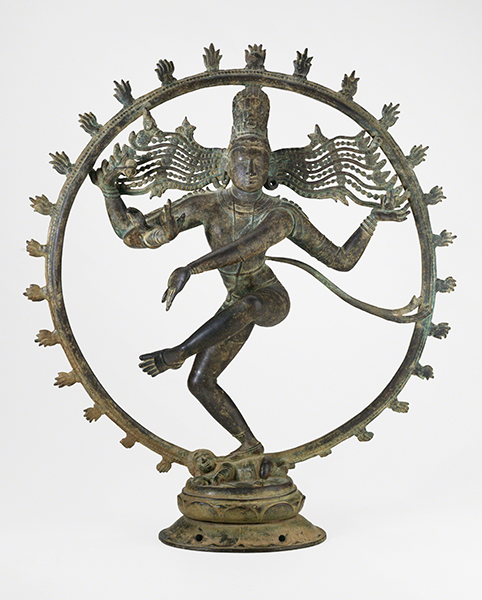Rethinking Classicism: Chola Dynasty
I’m continuing my investigation into different ways of interpreting classicism in art with a look at a classic style from India. Most major encyclopedic museums likely have in their collections this iconic image of Siva as the Lord of the Dance. These numerous versions of Siva Nataraja are primarily solid bronze casts. The naturalism and elegant movement of Chola dynasty (ca. 850–1310 CE) sculpture is a stark contrast to the heavy, static sculpted figures from the Gupta period (ca. 320–543 CE), then still under the sway of Greco-Roman art.
 |
| Chola Dynasty, Siva Nataraja, from Tamil Nadu, India, 900s or 1000s CE. Bronze, 25 ¼" x 24 5/16" x 9 ½" (69.3 x 61.8 x 24.1 cm). © 2020 Art Institute of Chicago. (B10015) |
When the Gupta Empire, which had dominated two-thirds of India, declined in power around 543 CE, six thriving, yet separate, kingdoms ensued and flourished for hundreds of years. There was a consolidation of the Hindu kingdoms in mid- and southern India by the 700s CE. The culture in southern India flourished through the Pallava (ca. 500–750 CE) and Chola dynasties. After a half-century of battles between contending kingdoms in southern India, the Chola dynasty came to dominate all of southern India and the island of Sri Lanka.
The resurgence of Hinduism is especially evident in the myriad versions of Siva Nataraja, an image that devotees of Siva carried in processions and displayed in household shrines. Siva is one of the major deities in Hinduism, the destroyer who oversees the destruction of the old (self and world) and controls its rebirth or becoming (symbolized in the dwarf Apasmara—ignorance or evil—on whom Siva dances).
In Siva’s cosmic dance of destruction and rebirth, the fire not only does away with the physical universe, but also the problems of illusion and ego-centered perceptions. In his beautifully depicted, scantily clad perfect body elegantly posed in dance, Siva’s “ceremony” is a joyful occasion in which the worshipper experiences liberation from detrimental earthly cares.
Metal casting of sculpture was known in India already in the 2000s BCE. Bronze casting was developed to its highest sophistication during the Chola period. Indian artists used the lost wax method of bronze casting. A wax figure of Siva would be covered in multiple layers of clay that was then fired in a kiln, allowing the wax to melt, forming the mold for molten metal.


Comments